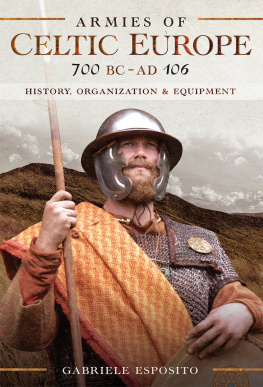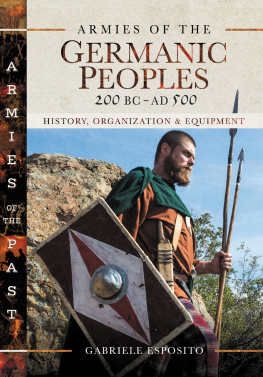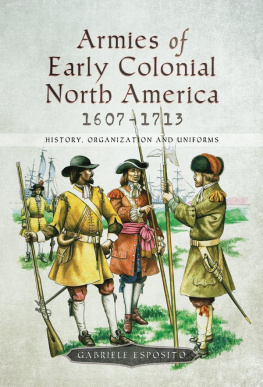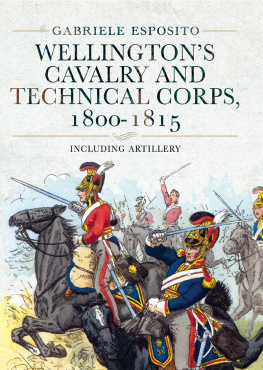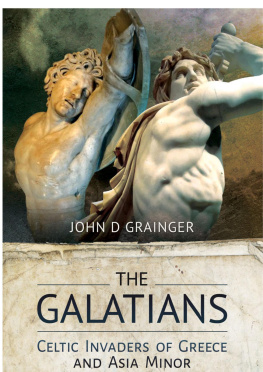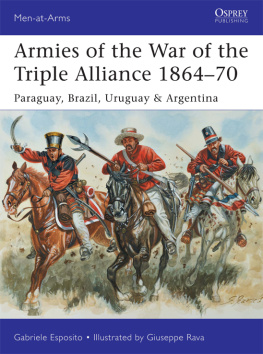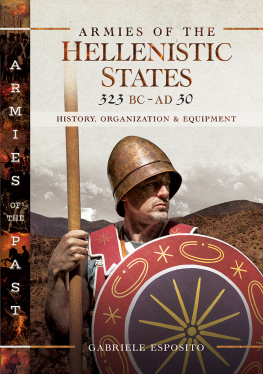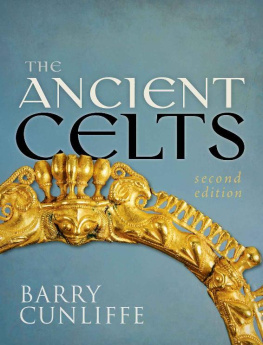The Fall of Berlin

Armies of Celtic Europe
700 BC to AD 106
Armies of Celtic Europe
700 BC to AD 106
History, Organization
& Equipment
Gabriele Esposito

First published in Great Britain in 2019 by
Pen & Sword Military
An imprint of
Pen & Sword Books Ltd
Yorkshire Philadelphia
Copyright Gabriele Esposito 2019
ISBN 978 1 52673 033 6
eISBN 978 1 52673 034 3
Mobi ISBN 978 152673 035 0
The right of Gabriele Esposito to be identified as Author of this Work has been asserted by him in accordance with the Copyright, Designs and Patents Act 1988.
A CIP catalogue record for this book is available from the British Library
All rights reserved. No part of this book may be reproduced or transmitted in any form or by any means, electronic or mechanical including photocopying, recording or by any information storage and retrieval system, without permission from the Publisher in writing.
Pen & Sword Books Limited incorporates the imprints of Atlas, Archaeology, Aviation, Discovery, Family History, Fiction, History, Maritime, Military, Military Classics, Politics, Select, Transport, True Crime, Air World, Frontline Publishing, Leo Cooper, Remember When, Seaforth Publishing, The Praetorian Press, Wharncliffe Local History, Wharncliffe Transport, Wharncliffe True Crime and White Owl.
For a complete list of Pen & Sword titles please contact
PEN & SWORD BOOKS LIMITED
47 Church Street, Barnsley, South Yorkshire, S70 2AS, England
E-mail:
Website: www.pen-and-sword.co.uk
Or
PEN AND SWORD BOOKS
1950 Lawrence Rd, Havertown, PA 19083, USA
E-mail:
Website: www.penandswordbooks.com
Gabriele Esposito is a military historian who works as a freelance author and researcher for some of the most important publishing houses in the military history sector. In particular, he is an expert specializing in uniformology: his interests and expertise range from the ancient civilizations to modern post-colonial conflicts. During recent years he has conducted and published several researches on the military history of the Latin American countries, with special attention on the War of the Triple Alliance and the War of the Pacific. He is among the leading experts on the military history of the Italian Wars of Unification and the Spanish Carlist Wars. His books and essays are published on a regular basis by Osprey Publishing, Winged Hussar Publishing and Libreria Editrice Goriziana; he is also the author of numerous military history articles appearing in specialized magazines like Ancient Warfare Magazine , Medieval Warfare Magazine , The Armourer , History of War , Guerres et Histoire , Focus Storia and Focus Storia Wars .
Acknowledgements
This book is dedicated to my fantastic parents, Maria Rosaria and Benedetto, for their great love and fundamental support in every phase of my life. Thanks to their precious words, the present book is a much better product: their great intelligence is always a secure harbour for me.
A very special mention goes to all the reenactment groups and living history associations who collaborated to this book, for providing me the magnificent and detailed photos that illustrate it: Confraternita del Leone/Historia Viva , Contoutos Atrebates , G.A.S.A.C. , Les Ambiani , Les Mediomatrici , Les Trimatrici , Teuta Arverni and Teuta Osismi . Without their incredible work of research and reenactment, the present work would have not been the same. I want to express my deep gratitude to all the leaders of these groups: they enjoyed and supported the idea of this book since the beginnings and helped me in every phase of the production with great generosity and patience.
Introduction
T he Celts are without doubt one of the most important peoples of Antiquity, since they represent something extremely significant for the history of Europe. They were the first proper civilization appearing in the northern part of the continent, after centuries during which Continental Europe had been some steps behind Mediterranean Europe in terms of technological progress and cultural development. Their heritage had a deep impact on the development of the continent, as Celtic art and religion were among the most important expressions of early European civilization. If we look at the cultural and artistic traditions of modern Europe, the Celtic influence is still clearly visible: this is particularly true for those areas of the continent where Celtic civilization experienced a higher degree of continuity, like Ireland and Scotland or Wales and Brittany. In the ninth-eighth centuries BC , when the Celts started to emerge, various Mediterranean civilizations were flourishing at full speed: the most important of these was represented by the Greek world, which started to re-emerge from the so-called Hellenistic Middle Ages that had followed the collapse of the Mycenean Civilization. The Greek cities were now increasing their populations and thus needed new markets for their growing economies: as a result, the necessities of commerce led the Greeks to the colonization of new territories that were located outside their homeland. In a few decades, Greek cities were founded in every corner of the Mediterranean, in a process that can be reasonably considered as the key factor behind the success of Greece during the later Classical Age. But the Greeks were not the only people living and expanding in the Mediterranean of the time: the Phoenicians, skilled merchants and famous seamen, were in the process of doing something very similar to Greek colonization. They started to settle across the Mediterranean in key locations, founding new colonies in territories like North Africa; it was in present-day Tunisia, for example, that they created the most important of their overseas cities: Carthage. The latter, during the following centuries, would become the most important commercial and military power of the western Mediterranean. Greeks and Carthaginians were not the only actors of this age: in the East, Egypt and Assyria continued to be two of the largest military powers of the Ancient World; in the West, the Italic and Iberian civilizations started to become much more mature thanks to the influxes of the Greeks and Carthaginians. Those were the years during which Rome was founded, just a few decades after Carthage.
At this point, looking at the map of Europe, it would be easy to conclude that all the great civilizations were located in the southern and Mediterranean part of the continent. As a result, a very simple question would come to mind: what happened during those same years in Continental Europe? Who lived in the regions of presentday France and Great Britain? Until the eighth century BC , northern Europe continued to be characterized by a Bronze Age culture that could not be considered as a proper civilization; all this changed with the development of the Celts, who soon became the first historical people of Continental Europe. As a result, we could say that the proper history of many important European countries started with them. Across the centuries of their long history, the Celts came into contact with all the Mediterranean civilizations discussed above: they invaded and pillaged Greece, fought as mercenaries for Carthage, settled in the northern part of the Italian peninsula, mixed with the Iberians to create a new culture, went to Egypt to fight for the local rulers and even created a new state in Asia Minor. From this list of historical events, it is easy to understand how the Celts were great protagonists of Antiquity, who left their mark on many aspects of our actual life. Knowing Celtic history well means knowing the origins of European civilization: it would be wrong, in fact, to consider the latter only as the product of the Greek and Roman cultures. History is written by the victors, and the Celts did not produce any written account of their culture, but this does not mean that we should underestimate their great historical achievements.

